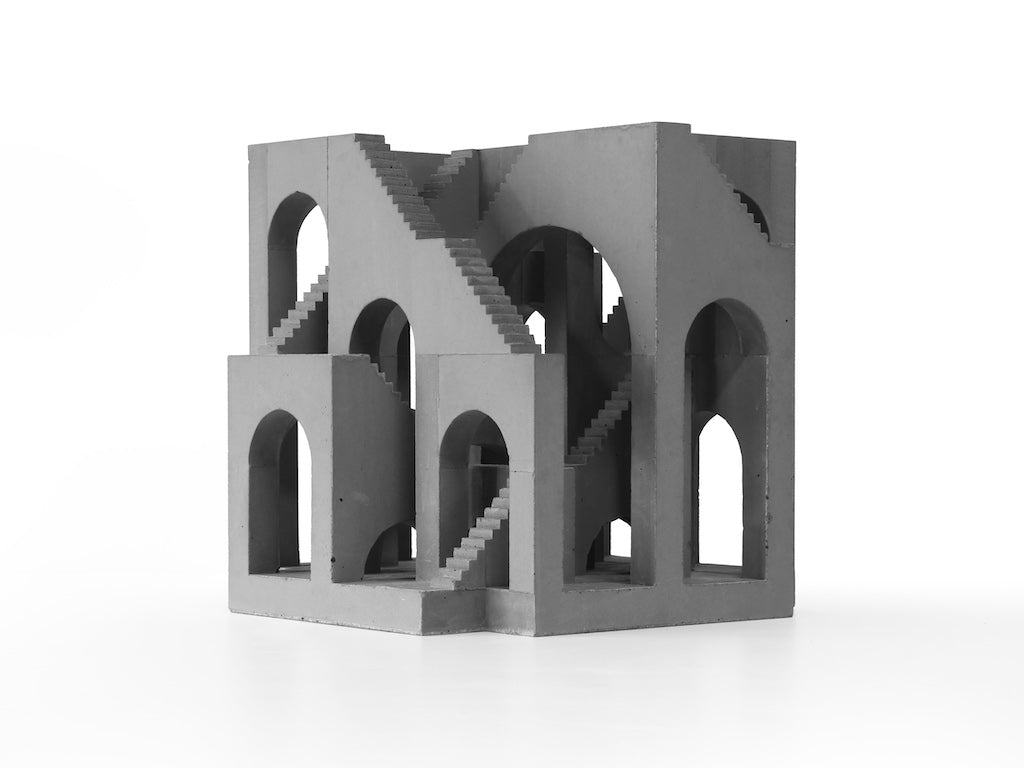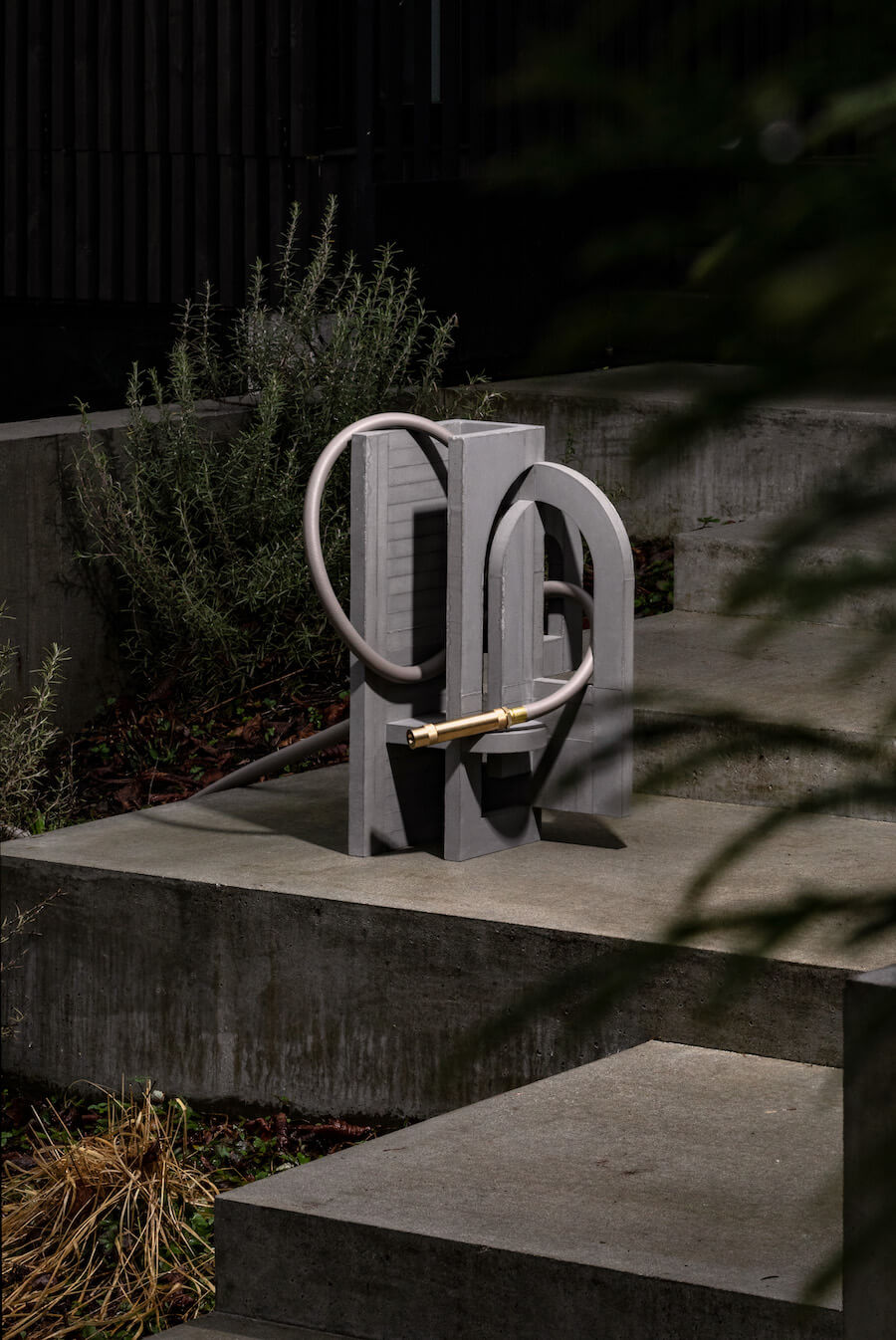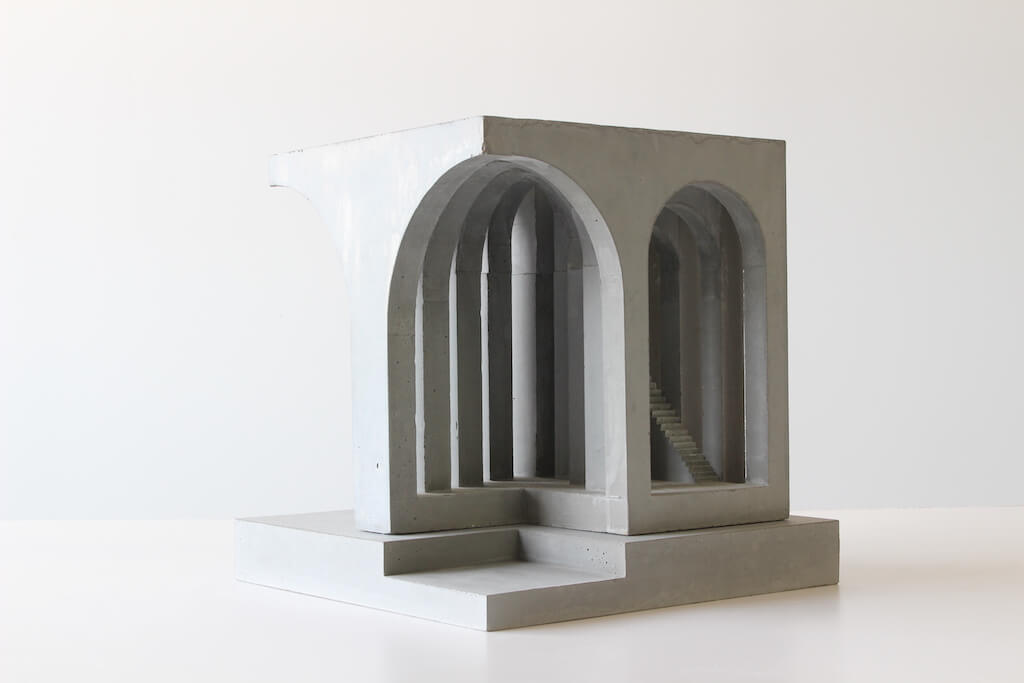Born in Ontario and raised in Montreal, sculptor David Umemoto had been trained as an architect. Graduating during a recession, he instead shifted his focus and chose to work making 3D models for architectural projects.
After a decade of this work, Umemoto visited Indonesia where he worked with a friend creating artwork in metal. He became enthusiastic about handmade processes and decided to take up making artwork full-time. With more limited space back home, he took to making molds and casting concrete into architectural sculptures, which gained him acclaim. More recently, Umemoto has moved towards making planters and experimenting with other moldable materials such as acrylic resin.
His deeply layered work projects solidity and ancientness. The arches and forms seem held together by fantasy as much as engineering, though Umemoto insists he works squarely in the realm of the possible—he works at the scale of time.

Gateway, David Umemoto.
Ben Dreith: What first drew you to concrete as a sculptural material?
David Umemoto: It's an architectural material and I just loved it instantly. I couldn't believe that you could make these nice, small objects so easily. If you have an idea you can make it in a few days and you can say okay, I would like to make another one—it’s so cheap. I like the idea of transforming something so basic into something nicer. It's amazing.
BD: Your works often seem fantastical—like ruins of some forgotten culture. Where does your imagination go when reaching for these forms?
DU: I worked for a few years with Cirque du Soleil. Some of the sets we were working on were inspired by African and Indonesian art. I noticed some universal, basic shapes like circles, squares, and triangles. They are always in relation to elements of very basic human needs.
I’m also very inspired by the American deserts, such as Monument Valley—these very dry, stone deserts. We know that they were carved by erosion, but there’s something man-made about them. And you realize that the first architecture was modifications of natural formations. There are all these relations between how the human and natural elements interact, and at some point, you’re not quite sure if certain aspects are natural or built. There’s a mystery. That’s what I tried to express.

BD: Are you interested in the monumental tendency shared between natural forms and man-made ones?
DU: Actually, what I try to achieve is scaleless. Yes, there's beauty and monumentality in nature, but it’s fractal. So these big structures you can just when you start looking closer or change your point of view, you keep seeing these patterns again and again. It’s about point-of-view. It may sound pretentious, but I try to aim for timeless forms.
BD: You’ve been moving into creating objects meant for holding plants. How does this fit into the world you’ve built?
DU: It comes back to these ideas of decay and ruins, especially in the jungle. In the desert, the structures interact mostly with wind and sun. But in the jungle things rots and get back to nature. I like that idea—of nature starting to decompose things, almost like it’s eating the structures.


BD: Even though they are heavy and monumental, there are also many staircases and passageways. Do you think about movement in your works?
DU: My sculpture tends towards architecture, and architecture is often static. But there are always actual people in architecture, there are cars, or the sky is moving. With the staircases and passageways, I’ve tried to touch on how one can bring movement into that stillness at scale.
BD: There are a lot of small differences in many of your concrete works. Can you talk about your design strategy?
DU: It’s a very hyperactive, iterative process. It’s additive and I start quite small. I start with a form then I realize it needs to get bigger, so I add a staircase, or remove one, and then add an arch and then two. That's what I've been doing for the past ten years. Before I scale, I go very slowly just to be able to control the architecture side. I justify every movement.
BD: You’ve spoken before about your work being a “humble gesture.” Can you elaborate on that?
DU: The material is humble. I don't mind sharing my process, because I haven't invented anything. It's very vernacular. It’s from nature but these arches can also refer more to the industrial—things that hands have touched. And I like it when people touch the work. There’s a tension between the precious artwork and something like a planter. Is the planter worth less? Not really, it's still handmade, it's still the same thought process.



